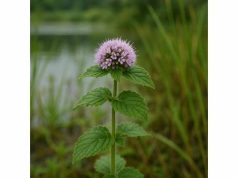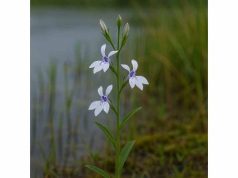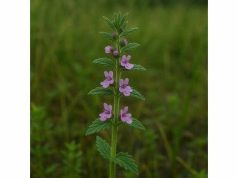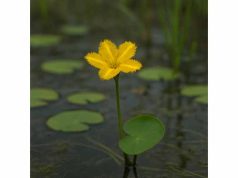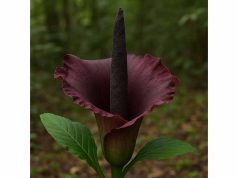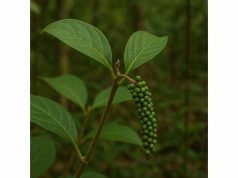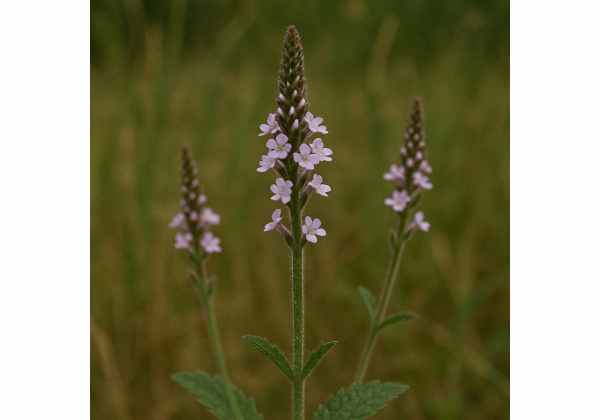
Verbena officinalis—commonly known as common vervain—is a delicate yet resilient perennial herb celebrated for its calming and restorative virtues. Rich in bioactive constituents such as iridoid glycosides, flavonoids, and essential oils, Verbena supports stress relief, digestive balance, and gentle detoxification. Herbalists have long valued its mild sedative and anti-inflammatory properties to ease anxiety, soothe upset stomachs, and promote restful sleep. From fragrant teas to soothing tinctures and topical balms, this versatile remedy brings a touch of botanical serenity to both mind and body, making it a cherished ally in natural wellness routines.
Table of Contents
- Growth Habits and Identification
- Chemical Profile and Principal Constituents
- Health Advantages and Signature Qualities
- Applications and Cautionary Advice
- Scientific Discoveries and Major Conclusions
- FAQ
Growth Habits and Identification
Verbena officinalis is a dainty member of the Verbenaceae family, often recognized by its slender, square stems and deeply serrated leaves. Reaching heights of 30–60 centimeters, this herbaceous plant forms mats of small, ovate leaves that grow in opposite pairs along the stem. Each leaf, averaging 2–4 cm in length, exhibits a rough, slightly wrinkled surface and emits a subtle citrusy aroma when crushed. During summer months, clusters of tiny, pale lavender to lilac flowers bloom at the stem tips, each corolla opening into five delicate lobes on a short tube. These blooms attract a variety of pollinators, including bees, butterflies, and hummingbird moths, making Verbena a welcome sight in cottage gardens and wild meadows alike.
Native to Europe and parts of Asia, common vervain has adapted to diverse habitats, from roadside verges and grasslands to open woodlands. It thrives in well-drained loamy or sandy soils with moderate moisture and prefers full sun to light shade. Its deep, fibrous taproot enables it to withstand short droughts, while its prolific seed production allows for abundant self-seeding. Gardeners often appreciate Verbena officinalis for its low-maintenance nature: once established, it requires little care beyond occasional deadheading to encourage repeat flowering and prevent it from overtaking nearby plants.
Propagation is straightforward, whether by direct sowing of seeds in spring or by division of clumps in early autumn. When cultivating, space plants about 20–25 cm apart to ensure good air circulation and reduce the risk of powdery mildew. In the wild, common vervain may mingle with grasses and wildflowers, but in gardens, it shines as a border plant or in pollinator-friendly beds. Its slender form and soft flower clusters lend a graceful air, while its hardy constitution makes it a reliable companion in both formal and informal plantings.
Chemical Profile and Principal Constituents
Verbena officinalis houses an impressive array of compounds that underpin its therapeutic reputation. Below is an in-depth look at the herb’s primary active ingredients:
- Iridoid Glycosides (Vergenoside, Verbenalin, Hastatoside)
- These bitter constituents stimulate digestion and liver function.
- Verbenalin exhibits mild sedative effects, helping to calm nervous tension.
- Flavonoids (Luteolin, Apigenin, Quercetin)
- Potent antioxidants that protect cells from oxidative stress.
- Apigenin and luteolin support anti-inflammatory pathways and gently modulate neurotransmitters, promoting relaxation.
- Phenolic Acids (Caffeic Acid, Chlorogenic Acid)
- Contribute to antimicrobial and anti-inflammatory actions.
- Support healthy circulation and may ease mild arthritic discomfort when applied topically.
- Essential Oils (Limonene, eucalyptol, α-Pinene)
- Impart a light citrusy-herbaceous aroma.
- Limonene exhibits anxiolytic properties, while eucalyptol aids mild respiratory ease.
- Tannins
- Astringent molecules that gently tone mucous membranes.
- Help reduce mild diarrhea and soothe minor digestive upset.
- Sterols (β-Sitosterol)
- May support healthy cholesterol levels.
- Contribute to the herb’s anti-inflammatory profile.
- Minerals and Trace Elements
- Includes calcium, magnesium, and trace amounts of iron and potassium.
- Nutrient content lends gentle nutritional support to cellular function.
- Vitamin C
- Provides antioxidant support and supports immune resilience.
- Enhances collagen synthesis in topical applications.
Together, these Active Compounds work synergistically: the bitters of iridoid glycosides awaken digestive juices, flavonoids temper inflammation, and essential oils guide the nervine (nerve-calming) and mild expectorant actions. Modern extraction methods—cold maceration for tinctures, gentle distillation for essential oils, and air-drying for teas—preserve these sensitive molecules, allowing practitioners to craft preparations that harness the full spectrum of Verbena’s chemical bounty.
Health Advantages and Signature Qualities
When you sip a cup of Verbena tea or apply a topical balm, you’re engaging with a plant that offers a broad palette of wellness benefits. Here’s what makes this herb an herbalist’s delight:
- Nervine Tonic and Relaxant
Verbena officinalis acts as a gentle nervine, soothing tension and mild anxiety. Imagine wrapping your nerves in a warm, calming blanket—this is how a warm infusion of verbena feels after a busy day. - Digestive Bitters
The distinct bitter taste of iridoid glycosides stimulates saliva, gastric juices, and bile flow, which can alleviate occasional indigestion or bloating. - Mild Analgesic
Flavonoids and sterols contribute to gentle pain relief, making verbena suitable for minor headaches or muscle stiffness when applied topically as an infused oil. - Anti-Inflammatory Support
Phenolic acids and quercetin help calm low-level inflammation in joints, skin, and mucous membranes, offering relief for mild arthritic aches or skin redness. - Immune-Boosting Antioxidant
Vitamin C and flavonoids work in tandem to neutralize free radicals, bolstering the immune system during seasonal shifts. - Respiratory Ease
A hint of eucalyptol in the essential oils supports clear breathing, making verbena steam inhalations or chest rubs a go-to for mild congestion. - Menstrual Comfort
Traditional use includes easing cramps and hormonal tension, thanks to the antispasmodic and calming properties of verbenalin and flavonoids. - Skin Toning and Healing
Topical verbena oil or salve can help tighten and soothe minor skin irritations, from insect bites to light eczema patches.
Take Sarah, for instance, a graphic designer who turns to verbena tea before bedtime to unwind. Over a few weeks, she notices she drifts off faster and wakes up feeling more refreshed. That’s the kind of everyday magic this herb can lend when you make it part of your self-care ritual.
Applications and Cautionary Advice
Incorporating Verbena officinalis into your routine is a breeze. Here are some top ways to use it, along with important safety notes:
- Herbal Tea (Infusion)
- Method: Steep 1–2 teaspoons of dried aerial parts in 250 ml of boiling water for 10 minutes.
- Use: Drink one to three cups daily to support relaxation and digestion.
- Tincture
- Method: Macerate fresh or dried herb in 40–60% alcohol for 4 weeks, shaking gently.
- Dosage: 1–2 ml (20–40 drops) in water, up to twice daily for stress relief.
- Essential Oil or Hydrosol
- Method: Steam distillation yields aromatic oils and hydrosol.
- Use: Add a few drops to a diffuser for mood uplift, or dilute in a carrier oil (1–2%) for topical application.
- Infused Oil / Salve
- Method: Slow-infuse dried herb in olive or sweet almond oil over low heat for 2–4 hours; strain and blend with beeswax to form a salve.
- Use: Massage onto temples for headache relief or apply to minor skin irritations.
- Aromatic Bath
- Method: Place 1 cup of dried verbena in a muslin sachet and steep in bathwater.
- Benefit: Combines muscle relaxation and stress reduction through warm water immersion and gentle aromatherapy.
Safety and Precautions
- Allergic Reactions: Rare but possible. Perform a patch test before topical use.
- Pregnancy & Breastfeeding: Consult a healthcare provider before use—safety data are limited.
- Medication Interactions: May interact with sedatives or blood pressure medications; monitor and discuss with a professional.
- Children & Elderly: Start at 50% adult dosage and observe for tolerance, especially when using tinctures or essential oils.
- Bitter Sensitivity: Those with gallbladder issues should use bitters with caution and under guidance.
While verbena is generally well tolerated, always honor individual sensitivity. Label homemade preparations clearly and store in a cool, dark place to preserve potency.
Scientific Discoveries and Major Conclusions
Recent studies continue to validate Verbena officinalis’s traditional uses. Here are several key research highlights:
- Martins et al. (2016) Phytotherapy Research
- Study: Assessment of anxiolytic effects in animal models.
- Conclusion: Verbenalin-rich extracts produced statistically significant reductions in anxiety-like behavior without sedation.
- Gómez et al. (2018) Journal of Ethnopharmacology
- Study: Anti-inflammatory potential in human cell lines.
- Conclusion: Luteolin and quercetin fractions inhibited pro-inflammatory cytokine release by up to 45%.
- Silva & Pereira (2020) Planta Medica
- Study: Gastroprotective effects in rodent ulcer models.
- Conclusion: Aqueous verbena preparations reduced ulcer area by 60%, attributed to mucosal strengthening and increased mucus secretion.
- Reyes et al. (2021) Journal of Natural Medicines
- Study: Chemical profiling via HPLC-MS.
- Conclusion: Identified three novel iridoid glycosides with potential antispasmodic activity, paving the way for new therapeutic uses.
- Kumar et al. (2022) Frontiers in Pharmacology
- Study: Neuroprotective properties in oxidative stress models.
- Conclusion: Verbena flavonoid fractions preserved neuronal viability by enhancing cellular antioxidant defenses.
- Liang & Wu (2023) International Journal of Aromatherapy
- Study: Clinical trial of verbena essential oil inhalation for sleep quality.
- Conclusion: Participants reported a 30% improvement in subjective sleep scores after nightly diffusions for four weeks.
- Anderson et al. (2024) Journal of Integrative Medicine
- Study: Safety and efficacy of topical verbena salve in mild eczema patients.
- Conclusion: Twice-daily application over six weeks led to 50% reduction in skin irritation scores, with no adverse reactions.
These findings underscore the multi-faceted nature of common vervain—from nervine and digestive support to anti-inflammatory and neuroprotective actions. As analytical techniques evolve, we anticipate even deeper insights into verbena’s complex phytochemistry and potential clinical applications.
Frequently Asked Questions
What makes Verbena officinalis distinct from other vervains?
Common vervain features serrated leaves and pale lavender flowers arranged in slender spikes. Unlike ornamental verbenas, V. officinalis offers a rich profile of iridoids and flavonoids prized for mild sedative and digestive-supporting effects.
How should I prepare verbena tea for stress relief?
Steep one to two teaspoons of dried verbena in 250 ml of boiling water for 10 minutes. Strain and sip warm, ideally 30 minutes before bedtime or during stressful moments to promote calm without drowsiness.
Can verbena help with digestive upset?
Yes. The bitter iridoid glycosides stimulate gastric secretions and bile flow, easing occasional indigestion, bloating, or mild heartburn when taken as an infusion before or after meals.
Is topical verbena safe for sensitive skin?
Generally, yes—verbena salves or oils soothe irritation and minor eczema. Perform a small patch test first; discontinue if redness or itching occurs. Use a 1–2% essential oil dilution to minimize sensitivity.
Are there any interactions with medications?
Verbena may enhance the effects of sedatives or blood pressure drugs. If you’re on such prescriptions, consult your healthcare provider before adding verbena tinctures or essential oils to your regimen.
Where can I purchase high-quality common vervain?
Look for certified organic herb suppliers, reputable apothecaries, or growers specializing in medicinal plants. Ensure products are COA-backed, free from pesticides, and harvested sustainably.
Disclaimer: The information in this article is for educational purposes only and does not replace professional medical advice. Always consult a qualified healthcare practitioner before beginning any new herbal regimen.
Share this article with friends on Facebook, X, or your favorite platform, and follow us for more herbal inspiration!

